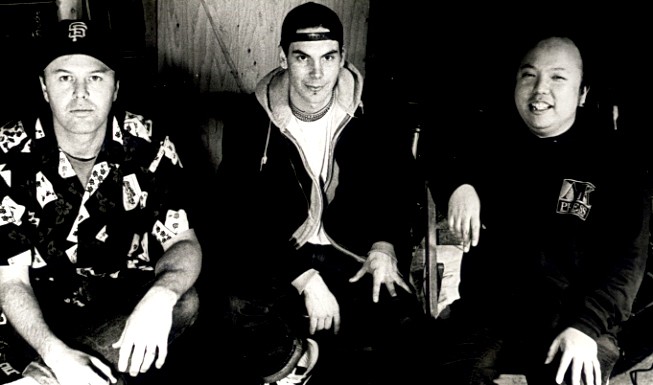
J Church was an American punk rock band formed by guitarist and vocalist Lance Hahn and bassist Gardner Maxam in 1992 in San Francisco, California after the demise of Hahn and Maxam’s former band, Cringer. The group continued through numerous lineup changes and released a staggering number of vinyl records and CDs prior to Hahn’s death in 2007.
Hahn and Maxam had played together in Cringer from the band’s inception in 1985 to its demise in 1991. This group, whose additional members changed frequently in its short career, was initially based in Hahn and Maxam’s native Hawaii before relocating to Los Angeles, California, where Maxam was attending college.
After Cringer disbanded, the pair’s new three-piece group, J Church, began. The band was named for the San Francisco Muni Metro line of the same name that Hahn took down Church Street to band practice and to work every day. They went through a large number of drummers in their career – a noteworthy early player was former Jawbreaker drummer Adam Pfahler. Upon its inception, J Church immediately embarked upon writing and recording what became an extensive discography including numerous singles and splits with fellow punk rock bands including Discount and Less Than Jake. The group has released an estimated 150 records.
Maxam played in the band until 1998, when he became overwhelmed by the rigors of touring and decided to quit. In 2002, the band relocated to Austin, Texas, and the group’s final lineup included bassist Ben White and drummer Chris Pfeffer of Severed Head of State, Storm the Tower, and Signal Lost.
Additionally, Hahn had become active as a “punk rock history writer”, writing many pieces for Maximum Rock ‘n’ Roll, the long-running San Francisco punk zine, and working on a book compiling various writings on anarcho-punk groups. Hahn also ran the independent record label Honey Bear Records.
Hahn had been suffering from kidney-related medical problems since 1999, and the problems worsened during the next decade. On July 7, 2007, a benefit entitled “Let’s Do It For Lance!” was released to help defray the cost of his medical bills. He died on October 21, 2007, aged 40, after falling into a coma nine days earlier due to complications from kidney dialysis.
